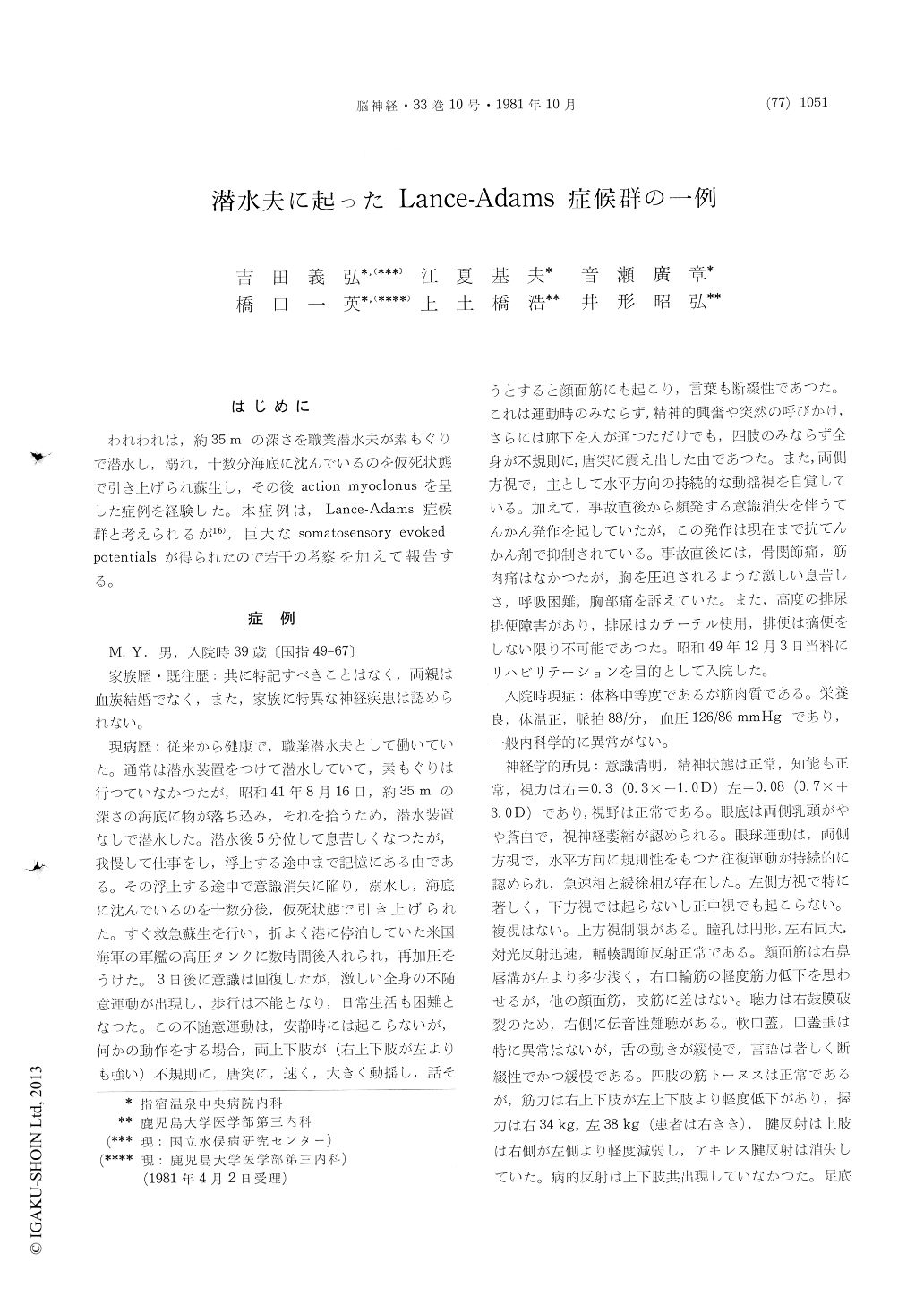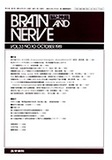Japanese
English
- 有料閲覧
- Abstract 文献概要
- 1ページ目 Look Inside
はじめに
われわれは,約35mの深さを職業潜水夫が素もぐりで潜水し,溺れ,十数分海底に沈んでいるのを仮死状態で引き上げられ蘇生し,その後action myoclonusを呈した症例を経験した。本症例は,Lance-Adams症候群と考えられるが16),巨大なsomatosensory evoked potentialsが得られたので若干の考察を加えて報告する。
A 39 years old man with severe action myoclonus and epileptic seizure was reported. He had been in good health and worked as an occupational diver until August 16, 1966, when he had to dive into the sea bottom about 35m deep without diving equipment. After finishing his work, he fell into unconsciousness and drowned. Sometime later, he was rescued and treated as decompression sickness. When he became alert, severe action myoclonus and epileptic seizure appeared. 8 years later, he was admitted to our hospital for rehabilitation.
The danger of diving without equipment was indicated, because in sea bottom alveolar oxgen pressure (PAO2) is about 450mmHg and alveolar airpressure 4.5 atmospheric pressure. In this condi-tion patient could hold his breath longer time than in sea sirface. When he finished his work and floated with muscle relaxing, however, his blood supply to the brain decreased. It was thought, therefore, that he fell into unconsciousness and drowned.
In somatosensory evoked potentials (SEP) by median nerve stimulation, giat patterns were reco-gnized but there were differences between SEP of myoclonus epilepsy and that of this patient. P50 and N70-80 were giant in him, suggesting that he had a brain stem disturbance. Since the inhibition system of fast conducted fiber did not work well in this state, the component of slow conducted fiber was magnified. Action myoclonus may be due to the disturbance of inhibition system in the brain stem.

Copyright © 1981, Igaku-Shoin Ltd. All rights reserved.


